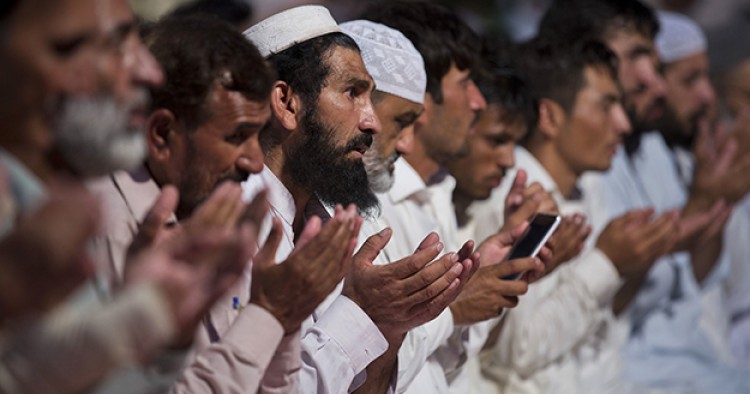Much has been written on the evolution of Islamist terrorism in Pakistan, the role of military dictatorships in nurturing Islamist terrorist groups, and Islamist parties and proselytizing groups working hand in glove with terrorists. Al-Qaeda and the Afghan Taliban were born in Pakistan, in addition to the country’s own long list of local terrorist groups such as the multi-faceted Tehreek-e-Taliban Pakistan (T.T.P.). Pakistan is now going through a new phase of Islamist militancy, with new alignments and the adoption of new tactics by jihadists.
A series of military and law enforcement operations have been carried out against terrorist groups in the last 15 years, with T.T.P. the primary target due to its involvement in most terrorist activities in Pakistan. The most serious counterterrorism operation is the ongoing Operation Zarb-e-Azb, now in its third year. The operation has pushed (as claimed) the T.T.P. into Afghanistan from its bases in tribal areas along the border.
However, the recent string of terror attacks in Pakistan suggests that the T.T.P.—which is not a monolithic entity, but rather a conglomerate of 42 groups—has regrouped and overcome a series of challenges in the past few years. T.T.P. suffered a major setback in November 2013 when its leader, Hakimullah Mehsud, was killed in a U.S. drone strike. Factional fighting ensued after his replacement, Mullah Fazlullah, was not accepted by all groups. The military took advantage of the situation and launched Zarb-e-Azb in 2014, which has thus far made significant inroads. Despite sporadic terrorist attacks, the overall momentum of Islamist insurgency in Pakistan seemed to be in reverse gear.
The perceived weakening of al-Qaeda and the T.T.P. invited a newcomer to the Pakistani jihadist scene: ISIS. The Levant-based terror group entered Pakistan months after capturing Mosul in June 2014. Some T.T.P. factions and al-Qaeda-linked groups, such as Jundullah and Tehreek-e-Khilafat Pakistan, immediately pledged allegiance to Abu Bakr al-Baghdadi. A number of Lashkar-e-Taiba (LeT) militants also joined ISIS’ Khorasan chapter, and Lashkar-e-Jhangvi (LeJ) established a working partnership with ISIS, abandoning its longstanding relationship with al-Qaeda.
But T.T.P. appears to have overcome its leadership crisis, and is now bringing back into its folds several renegade factions, such as Jamaat ul Ahrar and Sajna. The Pakistani jihadist scene now has two major competing umbrellas—T.T.P. and ISIS/LeJ. The February wave of terrorist attacks showcases this growing competition for ascendancy in jihadism. Worryingly, al-Qaeda, which recently launched its South Asia chapter—Al-Qaeda in the Indian Subcontinent (AQIS)—is still to be seen in action. While it previously maintained strong ties to T.T.P., al-Qaeda’s decision to launch its own South Asia chapter is seen as an attempt to reduce its dependency on local Pakistani jihadist groups and compete with ISIS Khorasan.
The recent competitive wave started off when the ISIS/LeJ alliance conducted three consecutive suicide bombings in Baluchistan in October 2016. Subsequently, T.T.P.’s Jamaat ul Ahrar killed 13 police officers in Lahore in a suicide attack, but that was met with an ISIS-LeJ attack on a Sufi shrine in Sindh province. Two more attacks were conducted by T.T.P.-allied groups in Khyber Pakhtunkhwa and Baluchistan provinces.
Apart from the new alignment, another serious trend is the changing tactics of terrorist groups operating in Pakistan. In contrast to previous years, the number of attacks has actually declined, but the current wave of attacks has resulted in heavy casualties. Terrorists have been able to improve the effectiveness of their strikes despite limiting the number of strikes. The Zarb-e-Azb military operation forced a major structural overhaul among jihadist groups. Prior to the operation, jihadist groups were more semi-conventional insurgencies, controlling territory, governing areas outside of state control, and imposing harsh brands of Shariah Law. The operation has dislodged them from their safe havens in the tribal border regions, prompting jihadists to resort to a more terror-focused insurgency—mass bombings with mass casualties.
The T.T.P.-affiliated Jamaat ul Ahrar, for example, threatened further attacks on civilian targets in a recent statement. The list included members of parliament, military, intelligence agencies, police, judiciary, secular political parties, blasphemous people, banks, and institutions spreading nudity and vulgarity.
While law enforcement and counterterrorism agencies study terrorist groups in order to subdue them, the latter also learn from their past mistakes and calculate their next moves accordingly. This is exactly what is happening currently in Pakistan. The military operation that ousted jihadists from their strongholds in the tribal border regions only resulted in the relocation of terrorists and a reassessment of their attack strategies. It is an essential lesson to learn as the United States and its allies take aim at jihadist terrorist groups with their destruction being the ultimate aim.
The Middle East Institute (MEI) is an independent, non-partisan, non-for-profit, educational organization. It does not engage in advocacy and its scholars’ opinions are their own. MEI welcomes financial donations, but retains sole editorial control over its work and its publications reflect only the authors’ views. For a listing of MEI donors, please click here.













